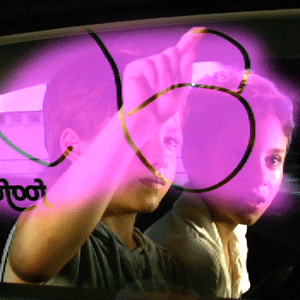 NEWS
NEWS
 NEWS
NEWS
 NEWS
NEWS
![]() In what feels like it could be a better innovation for windscreen dashboard gauges, Detroit-based General Motors is pushing forward a program to make backseat riders less bored during a drive. Looking at psychological reports that passengers in the backseat feel disconnected from their environment, they asked researchers to come up with a design for a window that permits interaction and connects them to the surroundings around the car.
In what feels like it could be a better innovation for windscreen dashboard gauges, Detroit-based General Motors is pushing forward a program to make backseat riders less bored during a drive. Looking at psychological reports that passengers in the backseat feel disconnected from their environment, they asked researchers to come up with a design for a window that permits interaction and connects them to the surroundings around the car.
As long as it doesn’t interrupt the attention of the driver this would be more like television-in-car and music systems for children in the back seat—just on the window next to them. I wonder how the passenger (or child in my case) getting stuck on the middle hump seat will feel about this.
Researchers and students from FUTURE LAB at Bezalel Academy of Art and Design in Israel took up the challenge from General Motors Research and Development to develop an augmented-reality window.
“Traditionally, the use of interactive displays in cars has been limited to the driver and front passenger, but we see an opportunity to provide a technology interface designed specifically for rear seat passengers,” said Tom Seder, GM R&D lab group manager for human-machine interface. “Advanced windows that are capable of responding to vehicle speed and location could augment real world views with interactive enhancements to provide entertainment and educational value.”
GM has no current plans to put this into production vehicles, so we get to see researchers and students let their imagination soar. Dubbed Project WOO—Windows of Opportunity—the interactive backseat windows would allow a sort of interactivity and outside-awareness that riders have never had before including the possibility of writing messages to other cars. (Remember learning that you had to write what you wanted to say backwards in breath-fog so that people in other cars could read it?)
Current apps include:
Perhaps this innovation will just lead to a new form of griefing and flamewars between passengers in highway bound vehicles—or it might lead to strange ad hoc gaming during traffic jams. With apps like Pond, people will be able to share their music with other cards nearby on the road, now there’s a use for an ad hoc network that I can get behind. Although the concept of Spindow feels a little bit too voyeuristic for my tastes (I wonder if it faces outwards or inwards) although being able to see what someone stuck in a traffic jam in Tokyo sees in real time while sharing my traffic jam experience in Phoenix would be enjoyable.
These apps use an innovative technique of “smart glass” that will be capable of acting as a multitouch surface and change its transparency/opacity and translucency in order to reflect projected images. To create the multitouch and gesture sensitive surface itself, the students used a motion tracking technology called EyeClick.
A gesture-based technology might also be useful for drivers (although with limited functionality) to allow them to hands-free controls in the car such as turning on and off internal lights, turning up and down music, and et cetera. So the technology being forwarded into these backseat panes might give insights into how drivers can be interacted with without distracting them from the road.
Fundamentally, GM wants to change the experience of a journey in one of their vehicles to be one of discovery as much as conveyance. Of course, doing something the other guy doesn’t won’t hurt their bottom line when it comes to buying decisions—now we’ll just have to see what Top Gear thinks of it when it appears on the product line.
Support our mission to keep content open and free by engaging with theCUBE community. Join theCUBE’s Alumni Trust Network, where technology leaders connect, share intelligence and create opportunities.
Founded by tech visionaries John Furrier and Dave Vellante, SiliconANGLE Media has built a dynamic ecosystem of industry-leading digital media brands that reach 15+ million elite tech professionals. Our new proprietary theCUBE AI Video Cloud is breaking ground in audience interaction, leveraging theCUBEai.com neural network to help technology companies make data-driven decisions and stay at the forefront of industry conversations.